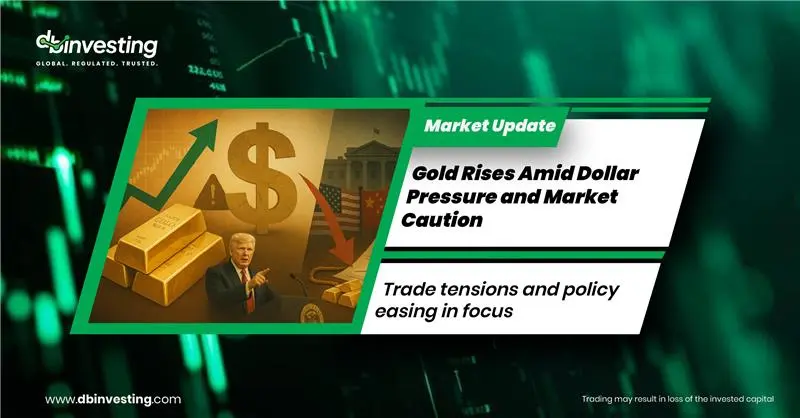Markets React to Trump’s Pressure on the Fed and Ongoing Trade Talks
Gold prices recorded a significant rise during Tuesday’s trading session, supported by the weakening U.S. dollar and growing uncertainty surrounding President Donald Trump’s tariff policies as the July 9th deadline approaches. This uncertainty drove investors towards safe-haven assets.
The U.S. Dollar Index fell to its lowest level in more than three years, making dollar-priced gold more attractive to investors holding other currencies.
On Monday, Trump expressed his frustration with the pace of trade negotiations with Japan, while U.S. Treasury Secretary Scott Besant warned that some countries might face steep tariff increases.
It is noteworthy that the announced tariffs, ranging from 10% to 50%, which were introduced on April 2, are set to take effect on July 9 after a 90-day postponement, unless bilateral trade agreements are reached.
At the same time, Trump continued to pressure the Federal Reserve on Monday to ease monetary policy. He sent Fed Chair Jerome Powell a list of global central bank interest rates, with handwritten notes suggesting that “U.S. interest rates should be between 0.5% as in Japan and 1.75% as in Denmark.”
Meanwhile, investors are closely watching a series of U.S. labor market reports this week, shortened due to holidays, culminating in Thursday’s release of official employment data, expected to offer clearer signals on the Fed’s policy direction.
In Europe, the euro rose on Tuesday against a basket of global currencies, extending gains for the ninth consecutive day against the U.S. dollar, trading above the $1.17 mark for the first time since 2021. This came amid strong demand for the euro as the best alternative investment to the weakening dollar.
These movements were fueled by renewed concerns over the Federal Reserve’s independence and monetary stability in the U.S. following another attack by President Trump on Jerome Powell.
Expectations for a European Central Bank (ECB) rate cut in July have recently declined. Investors are now awaiting key Eurozone inflation data for June, which will help reassess those expectations.
ECB President Christine Lagarde stated that with the recent cut and the current interest rate levels, “we are likely nearing the end of the easing cycle.”
According to Reuters sources, a clear majority in the ECB’s latest meeting preferred keeping interest rates unchanged in July, with some advocating for an extended pause.
Money markets have scaled back their expectations of an ECB rate cut, now pricing in only a 25-basis-point cut by year-end, down from 30 basis points previously.
If today’s Eurozone inflation data comes in hotter than expected, the likelihood of rate cuts in the second half of the year may diminish, supporting the euro’s continued rise in the foreign exchange market.
Meanwhile, oil prices dropped to a three-week low on Tuesday, reaching levels not seen since before the recent Israel-Iran tensions. The decline was driven by easing supply concerns and expectations of increased OPEC+ production.
Focus now turns to OPEC+’s upcoming meeting later this week, where the group is expected to continue unwinding two years of production cuts.
Reuters reported last week that OPEC+ will increase production by 411,000 barrels per day in August, following similar hikes in May, June, and July.
This will bring OPEC+’s total supply increase for the year to 1.78 million barrels per day, although this remains below the total cuts implemented over the past two years.
The August production hike is likely to signal further increases from OPEC+, partially aimed at countering prolonged weakness in oil prices.
Additionally, major OPEC+ producers like Saudi Arabia and Russia are seeking to penalize overproducing members within the cartel by maintaining lower oil prices.
Conclusion:
The global markets are currently navigating a complex landscape shaped by U.S. tariff policies, central bank pressures, European inflation dynamics, and OPEC+ production decisions. Investors should remain vigilant, as upcoming economic reports and policy shifts could reshape market trajectories in the coming weeks.
